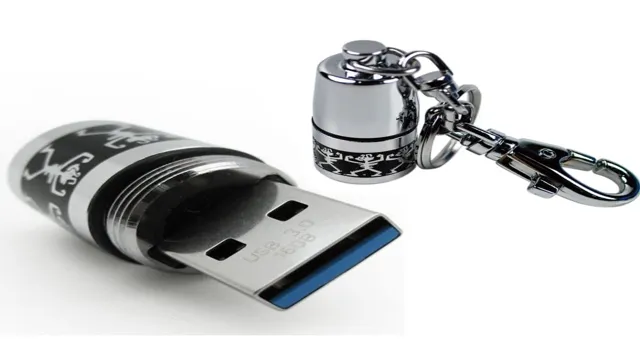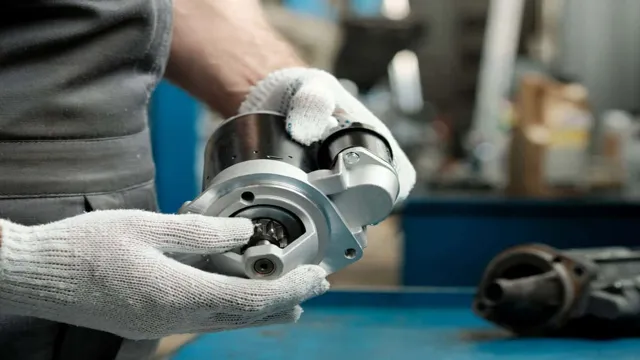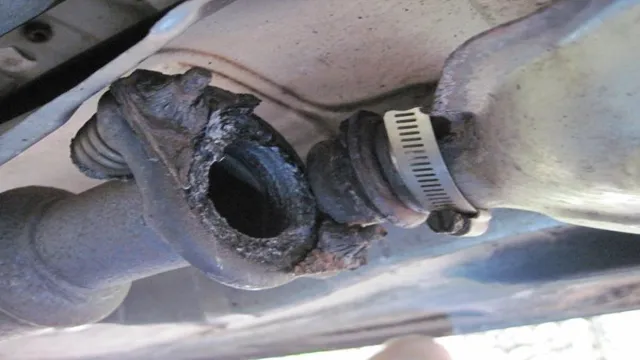6.4 Powerstroke: The Ultimate Guide to Bulletproofing Your Engine
If you’re a proud owner of a 4-liter diesel truck, you know the importance of keeping it in top form. But with so many potential issues that can arise, how can you make sure that your vehicle is bulletproof? Look no further, as we’re here to guide you through exactly how to do just that.
From upgrading your fuel system to installing head studs, we’ll cover everything you need to know to bulletproof your 4 and keep it running smoothly for years to come. Picture this: your truck is a fortress, and every inch of its armor is meticulously designed to withstand any obstacles thrown its way.
In the same way, bulletproofing your 4 is about fortifying each part of the engine to prevent common problems such as blown head gaskets, cracked pistons, and injector failure. With our expert tips and guidance, you’ll be able to transform your
4 into a mighty beast that can tackle any challenge with ease. Whether you’re a seasoned mechanic or a beginner just starting out, we’re here to help you every step of the way. So buckle up, grab your toolbox, and let’s get started on bulletproofing your
4-liter diesel truck the right way.
Diagnose Common Issues
When it comes to bulletproofing a 4 engine, there are a few common issues that you need to be aware of. One of the biggest concerns is the EGR system, which can cause coolant leaks and engine damage if not dealt with correctly.
Another issue to watch out for is the fuel system, as the Bosch injectors commonly fail. Additionally, the stock head bolts are notorious for stretching and causing head gasket failures, so upgrading to ARP studs is highly recommended. Regularly monitoring your coolant and oil levels is crucial, as any sudden drops could indicate a problem that needs to be addressed.
By taking these preventative measures and addressing any issues as they arise, you can help ensure your 4 engine stays reliable and runs at its best.
Examine Cooling System
The cooling system is a vital component of any vehicle, but unfortunately, it’s not immune to problems. One of the most common issues with the cooling system is overheating. An overheated engine is often caused by a malfunctioning thermostat, a leak in the radiator or hoses, or a broken water pump.
If you notice your temperature gauge creeping into the red zone or steam coming from under the hood, it’s time to take immediate action. Another common issue that occurs with the cooling system is leaks. Leaks can occur in the radiator, hoses, or the water pump, and they can be caused by a variety of factors.
It’s essential to quickly identify and repair any leaks to prevent more significant problems from occurring in the future. Regular maintenance and inspections of the cooling system can help prevent these issues from happening in the first place. By keeping up with your vehicle’s maintenance, you can ensure that your cooling system is functioning correctly and avoid costly repairs.

Check Fuel System
When it comes to diagnosing common fuel system issues, there are a few things that can go wrong. The first thing to check is the fuel pump. If your fuel pump isn’t working properly, it won’t be able to pump fuel to the engine efficiently.
One way to diagnose a faulty fuel pump is to listen for a humming sound when you turn the key in the ignition. If you don’t hear the sound, your fuel pump may need to be replaced. Another common issue is a clogged fuel filter.
Over time, dirt and debris can accumulate in the fuel filter, making it difficult for fuel to flow through. This can cause your engine to struggle or even stall. To diagnose a clogged fuel filter, you can try replacing it and see if the issue is resolved.
Oftentimes, these issues can be prevented by regularly maintaining your vehicle, such as changing the fuel filter and keeping the fuel tank at least a quarter full. Keep these tips in mind to keep your fuel system running smoothly and efficiently.
Upgrade Critical Components
If you’re looking to bulletproof your 4 powerstroke, one of the best ways to do so is by upgrading its critical components. There are a few areas where you can make significant upgrades that can help your engine perform better and last longer.
One place to focus on is the fuel system. Upgrading your fuel system with a stronger lift pump and larger injectors can help with the fuel flow, making your engine run smoother and with less strain. Another area to consider is the transmission.
The 4’s stock transmission isn’t always reliable, so upgrading to a beefier option can help you avoid some common transmission issues and keep your truck running like new. Additionally, upgrading critical components like the turbocharger, intercooler, and exhaust system can help increase performance and reduce the likelihood of parts failure.
By prioritizing upgrades to these critical systems, you can help ensure your 4 powerstroke is as bulletproof as possible.
Install EGR Delete Kit
If you’re looking to upgrade the critical components of your vehicle, installing an EGR delete kit is a great place to start. This kit can significantly improve your vehicle’s power and overall performance, while also reducing the amount of pollution emitted by your vehicle. An EGR delete kit works by replacing the EGR valve and blocking off the EGR system, which allows for more efficient combustion and power output.
Not only does this upgrade enhance your driving experience, but it can also save you money on maintenance costs in the long run. So, if you’re looking to get the most out of your vehicle, consider installing an EGR delete kit and experience the difference for yourself.
Upgrade Turbocharger
Upgrading the turbocharger of your car can be an exciting modification, as it can dramatically increase the power and performance of your engine. However, it is also crucial to keep in mind that upgrading a critical component such as the turbocharger requires careful consideration and planning. It’s essential to choose the right turbocharger that’s compatible with your car’s engine and meets your specific needs.
You should also ensure that all other supporting components are also upgraded to avoid any damage to the engine. Upgrading the turbocharger can be a significant investment, but it’s essential to note that it’s an investment that will pay off in terms of power gains, improved performance, and increased durability. Keep in mind that finding the right turbocharger can take some time, and it’s always best to seek expert advice from a reputable mechanic or turbocharger specialist to ensure a successful upgrade.
Replace Head Gaskets
If you have a car, truck, or SUV that is experiencing overheating, coolant loss, or oil contamination, it may be time to replace the head gaskets. Upgrading critical components like the head gaskets can be a smart investment for the long-term health of your vehicle. Head gaskets play a vital role in sealing the engine, preventing engine fluids from entering the combustion chamber, and ensuring proper compression between the engine cylinders.
Failure of the head gasket can cause significant engine damage and result in a costly repair bill. By upgrading your head gaskets, you can restore the health of your engine and prevent future engine problems. Don’t let a failing head gasket ruin your driving experience, consider upgrading today!
Use High-Quality Fluids & Filters
When it comes to bulletproofing a 4, ensuring that high-quality fluids and filters are used is essential. Quality fluids and filters not only safeguard the engine from wear and tear but also ensure that it continues to perform to its maximum potential.
With a 4 engine, it is essential to use filters that can handle the high performance and extreme pressure that the engine is capable of. Furthermore, using high-quality fluids like synthetic engine oil, transmission fluid, and coolant can significantly improve the engine’s overall performance and longevity.
Investing in good quality fluids and filters may seem like an added expense, but it can save you from expensive repairs and maintenance in the long run. So leaving out this crucial step in bulletproofing your 4 could be a costly mistake.
Select Synthetic Oil
Selecting synthetic oil is an important step in maintaining your vehicle’s engine. Using high-quality fluids and filters will ensure that your vehicle runs smoothly and efficiently, increasing its lifespan. Synthetic oils are recommended by many mechanics because they offer better protection for your engine than conventional oils.
They have a higher resistance to heat and can withstand extreme temperatures, reducing the risk of engine damage due to overheating. Synthetic oils are also better at keeping your engine clean, which in turn means better fuel efficiency and smoother performance. When selecting synthetic oil, make sure to choose a product that meets the requirements of your engine.
It’s important to note that not all synthetic oils are created equal, so be sure to do your research and choose a high-quality synthetic oil that will keep your engine running like new.
Choose High-Efficiency Air Filter
When it comes to keeping your HVAC system running smoothly, using high-quality fluids and filters is crucial. One of the most important aspects is choosing a high-efficiency air filter. These filters are designed to capture even the tiniest particles that can cause damage to your system or harm your indoor air quality.
Not all air filters are created equal, so it’s essential to use one that is rated to capture the specific particles that are present in your home or business environment. A high-quality air filter can also help prolong the lifespan of your HVAC system, saving you money in the long run. So, next time you’re in the market for a new air filter, choose a high-efficiency one that will keep your system running smoothly and your indoor air clean and healthy.
Regular Maintenance Schedule
If you want to bulletproof your 4, you need to follow a regular maintenance schedule. Regular maintenance is key to keeping your engine in tip-top shape and avoiding costly repairs down the road.
Start by checking your oil levels regularly and doing oil changes every 5,000 to 7,500 miles. It’s also important to check your coolant levels, as low levels can cause your engine to overheat and lead to serious damage. Make sure you inspect your belts and hoses for wear and tear, as well as your air and fuel filters, and replace them as needed.
Additionally, get your injectors cleaned every 30,000 miles to prevent any buildup and optimize fuel efficiency. Sticking to a maintenance schedule may not be the most exciting task, but it will pay off in the long run by extending the life of your engine and improving its performance.
Conclusion
At the end of the day, bulletproofing a 4 is no easy task. It requires expertise, patience, and a willingness to actually do the work.
But with the right approach and some top-notch components, you can create a machine that’s truly unbreakable. Just remember: it’s worth taking the time to do it right, because when you’re cruising down the highway with a rock-solid, bulletproofed engine, you’ll know you’ve done something truly special.”
FAQs
What are some common issues with the 6.4 engine that can lead to failures?
Some common issues with the 6.4 engine include high pressure fuel pump failures, EGR failures, cylinder head failures, and cracked pistons.
What are some steps I can take to prevent engine failures in my 6.4?
Some steps to prevent engine failures in a 6.4 include regular maintenance such as oil changes and fuel filter replacements, installing aftermarket fuel filters and lift pumps, and avoiding aggressive driving or extended idling.
How can I improve the longevity of my 6.4 engine?
Options to improve the longevity of a 6.4 engine include upgrading to stronger head studs and gaskets, performing EGR and DPF deletes, adding a coolant filtration system, and using high-quality synthetic lubricants.
What are some signs that my 6.4 engine may need to be bulletproofed?
Some signs that your 6.4 engine may need to be bulletproofed include excessive coolant loss, oil in the coolant, white smoke or excessive black smoke from the exhaust, and a loss of power or acceleration.





